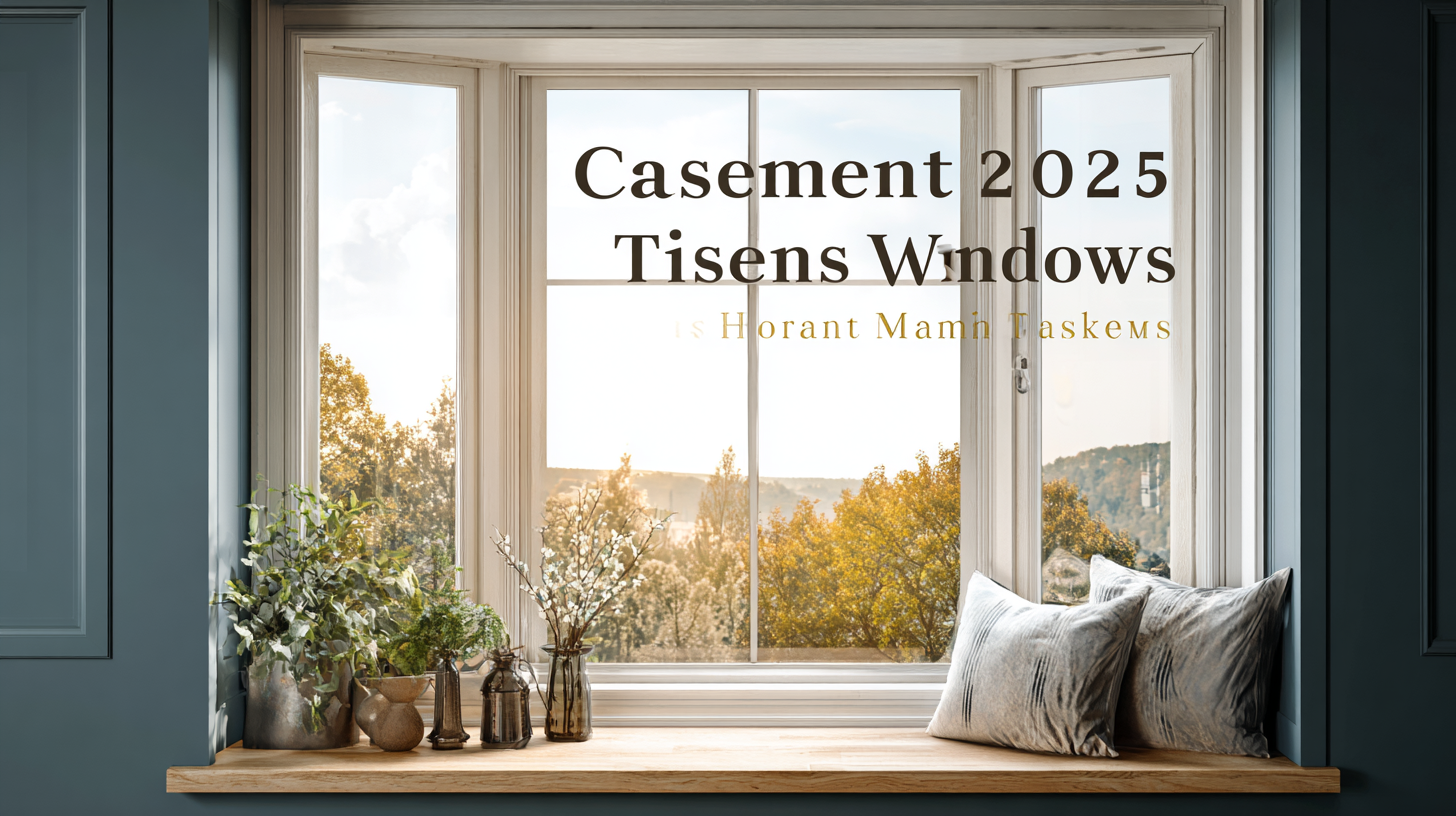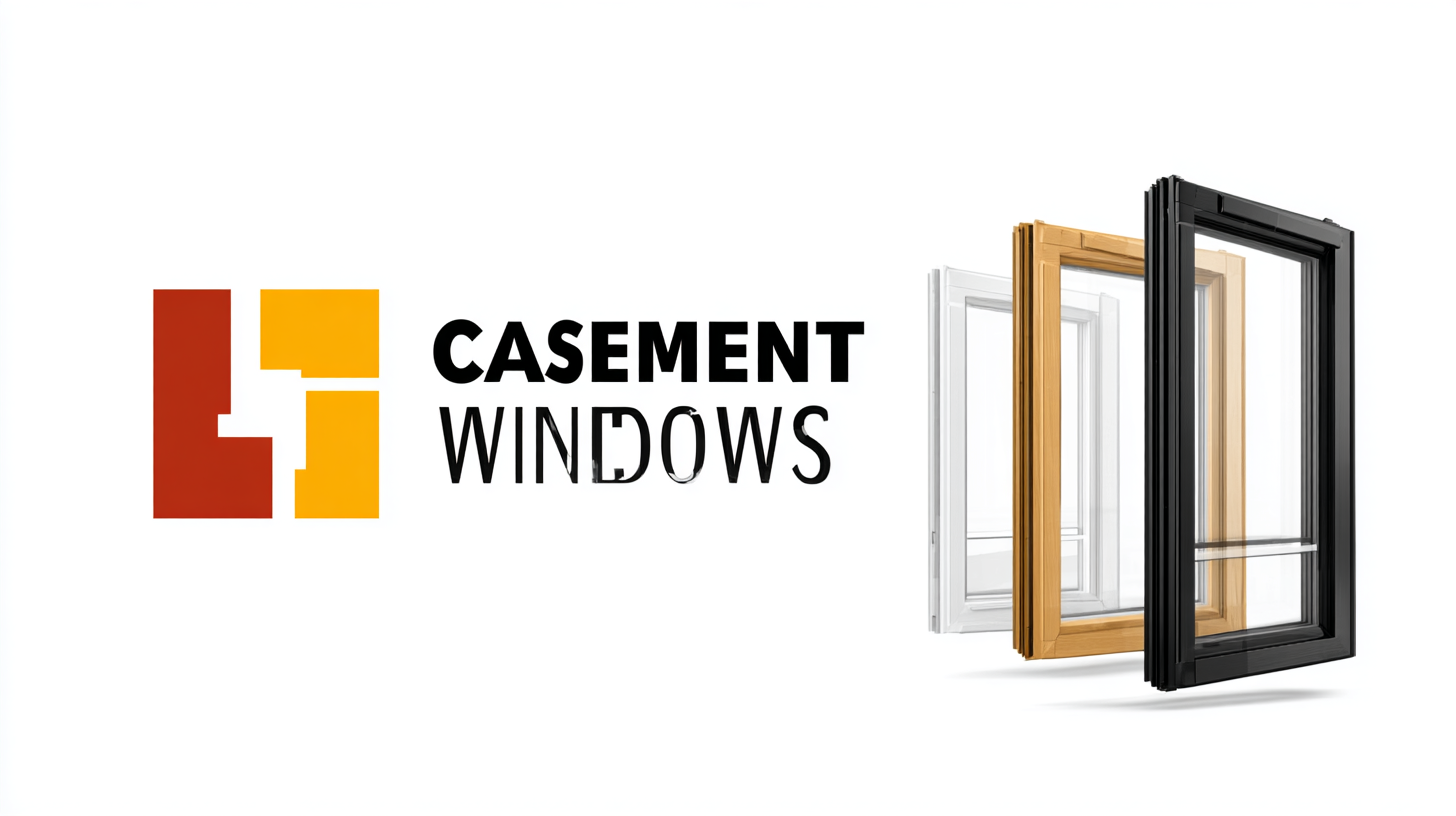As we look towards 2025, the casement windows market is poised for significant transformation, driven by advancements in technology and evolving consumer preferences. According to a recent report by MarketsandMarkets, the global window and door market is expected to reach USD 300 billion by 2025, with casement windows playing a pivotal role due to their energy efficiency and aesthetics. Increasing awareness of environmental sustainability and energy efficiency is pushing manufacturers to innovate, leading to a forecasted CAGR of 4.0% for casement windows within the next five years. Additionally, the burgeoning demand for customizable and high-performance windows, particularly in the residential sector, underlines the potential for casement windows to capture a larger market share. This blog aims to delve into emerging trends, key players, and insights for global buyers navigating the dynamic landscape of the casement windows market.

As the window industry continues to evolve, buyers in 2025 will increasingly seek high-quality casement windows that combine durability, energy efficiency, and modern aesthetics. According to a recent market analysis by Research and Markets, the global casement window market is projected to witness a compound annual growth rate (CAGR) of 4.5% over the next few years, driven by the rising demand for energy-efficient home solutions. High-quality casement windows are characterized by features such as multi-point locking systems, superior weatherproofing, and advanced glazing options that enhance insulation performance.
When shopping for casement windows, it’s essential to prioritize energy efficiency. Look for models with a low U-value and Energy Star certification, which indicates they meet strict energy performance standards. A recent report by the American Council for an Energy-Efficient Economy highlights that homes fitted with high-performance windows can achieve energy savings of up to 30%, significantly reducing utility bills.
Additionally, aesthetic appeal and customization options play a critical role in buyer preferences. Modern casement windows come in a variety of styles, colors, and finishes to suit any architectural design, giving homeowners the opportunity to make a personal statement while reaping the benefits of advanced technology. Buyers should consider suppliers that offer a wide selection of customizable features, as highlighted in the latest Global Window Industry Trends report.
When searching for casement windows, it is essential to identify key supplier qualifications that can ensure quality and durability. One significant factor to consider is the supplier's industry experience; companies with a proven track record in the manufacturing and installation of casement windows can more reliably provide products that meet industry standards. Additionally, certifications from recognized organizations indicate that the supplier adheres to specific quality benchmarks, giving buyers confidence in their choice.
Another important qualification is the range of products offered. A reputable supplier should provide an extensive selection of materials, styles, and energy efficiency options for casement windows. This variety not only allows buyers to find the right fit for their aesthetic and functional needs but also ensures that the supplier has expertise in catering to diverse consumer preferences.
Tip: Always request samples or case studies from potential suppliers to evaluate their craftsmanship and the performance of their windows under various weather conditions. Additionally, inquire about warranty options and after-sales support, which can be crucial for long-term satisfaction with your purchase.

In today's environmentally conscious world, sustainable practices in casement window manufacturing are more crucial than ever. As the focus shifts towards eco-friendly products, manufacturers are adopting innovative approaches to minimize waste and reduce carbon footprints. This includes using recycled materials, optimizing production processes, and enhancing energy efficiency in their products.
One essential tip for buyers is to look for certifications that indicate the sustainability practices of window manufacturers. These certifications often highlight the use of eco-friendly materials and adherence to environmental standards, ensuring that the products contribute positively to the environment. Additionally, considering windows with excellent thermal performance can significantly reduce energy consumption, which is beneficial both for the environment and for homeowners looking to lower their utility bills.
Another tip is to support brands that invest in renewable energy for their manufacturing processes. Companies that utilize solar or wind energy not only reduce their operational impact but also foster a cleaner supply chain. By making informed choices, consumers can influence the market towards more sustainable practices and contribute to a greener future in the casement windows industry.
| Region | Market Size (USD Million) | Growth Rate (%) | Sustainability Practices | Top Materials Used |
|---|---|---|---|---|
| North America | 850 | 5.5 | Recycled materials, Energy-efficient production | Vinyl, Wood, Aluminum |
| Europe | 720 | 4.9 | Sustainable sourcing, Carbon neutrality | Wood, Composite materials |
| Asia-Pacific | 600 | 6.2 | Eco-friendly coatings, Waste reduction | Aluminum, PVC |
| Latin America | 310 | 3.8 | Local sourcing, Sustainable waste management | Wood, Vinyl |
| Middle East & Africa | 245 | 4.0 | Water conservation, Energy-efficient technologies | Aluminum, Composite |
As the global market for casement windows approaches 2025, technology innovations are dramatically reshaping the industry. With a projected CAGR of 5.2% between 2023 and 2028, the demand for advanced casement windows is on the rise, driven by factors such as energy efficiency, aesthetic appeal, and sustainability. Exciting trends include the incorporation of smart window technology, which allows for automated operation and remote access, enhancing user convenience while optimizing natural light and ventilation.
Furthermore, the advent of energy-efficient materials, such as triple-glazed units and thermally broken frames, is revolutionizing how casement windows perform. According to the U.S. Department of Energy, windows account for up to 30% of residential energy use. By integrating high-performance glass and enhanced insulation techniques, homeowners can significantly reduce their energy consumption and utility bills. These innovations not only align with rising consumer expectations for eco-friendly building solutions but also comply with increasingly stringent regulations aimed at reducing carbon footprints. As these technological advancements continue to evolve, they are likely to define the future landscape of the casement windows market, appealing to a growing base of global buyers.
When navigating the best casement windows market, particularly in the context of 2025, selecting reliable suppliers is paramount. A comprehensive strategy to vet potential suppliers should begin with assessing their industry certifications and compliance with local and international standards. According to a report by Grand View Research, the global window market is projected to reach USD 250 billion by 2025, emphasizing the competitive landscape where quality can significantly influence buyer decisions. Suppliers with certifications such as Energy Star or FENSA not only enhance your credibility but also assure adherence to thermal performance and safety standards.
In addition to certifications, understanding a supplier's product range and technology integration is vital. Data from Allied Market Research indicates that the demand for energy-efficient and smart windows is on the rise, expected to grow at a CAGR of 6.8% from 2020 to 2027. Evaluating suppliers based on their innovation in window technology, such as Low-E glass and advanced frame materials, can provide insights into their capability to meet evolving market demands. Engaging in direct communication and requesting product samples can further help in assessing product quality and responsiveness, leading to more informed and strategic procurement decisions.





